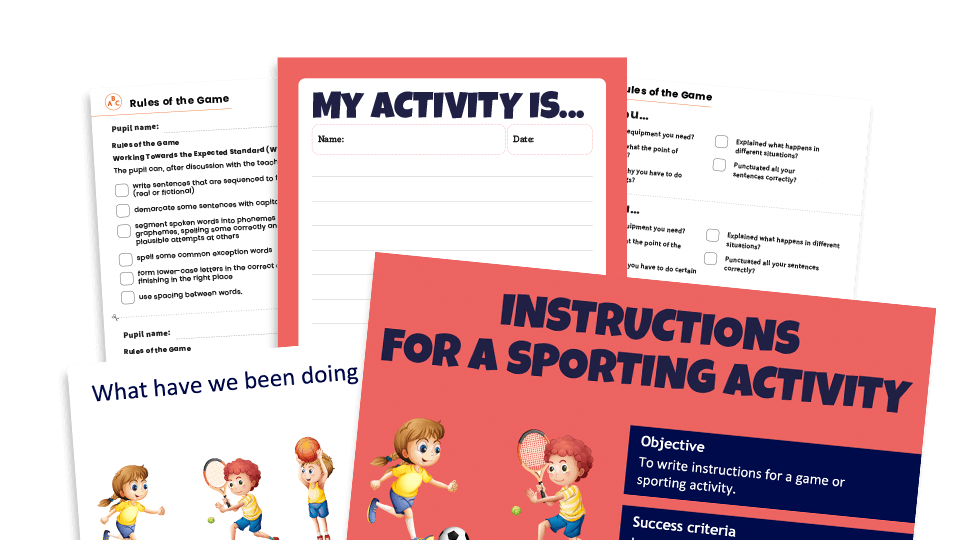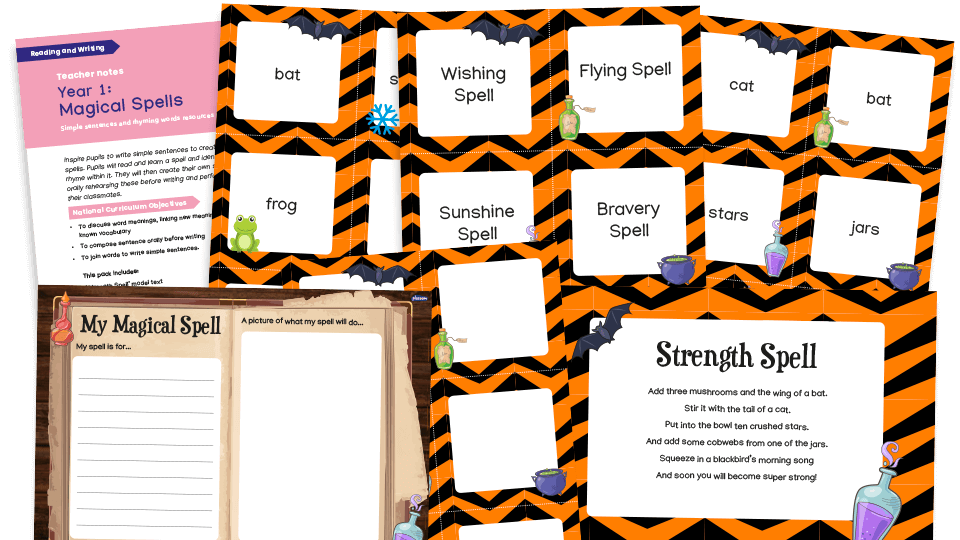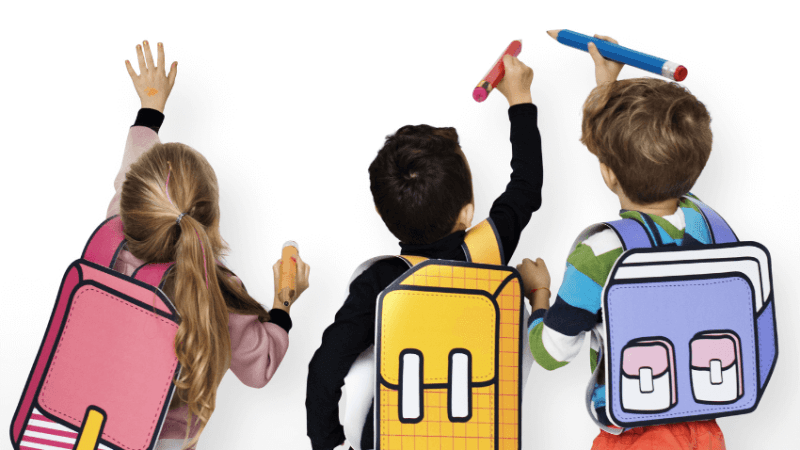Instructional writing – Best worksheets and resources for KS1 and KS2

1. Get resources. 2. Prepare lesson. 3. Teach instructional writing – These activities, ideas, worksheets and more will help you on your way…

- by Teachwire
- Classroom expertise and free resources for teachers
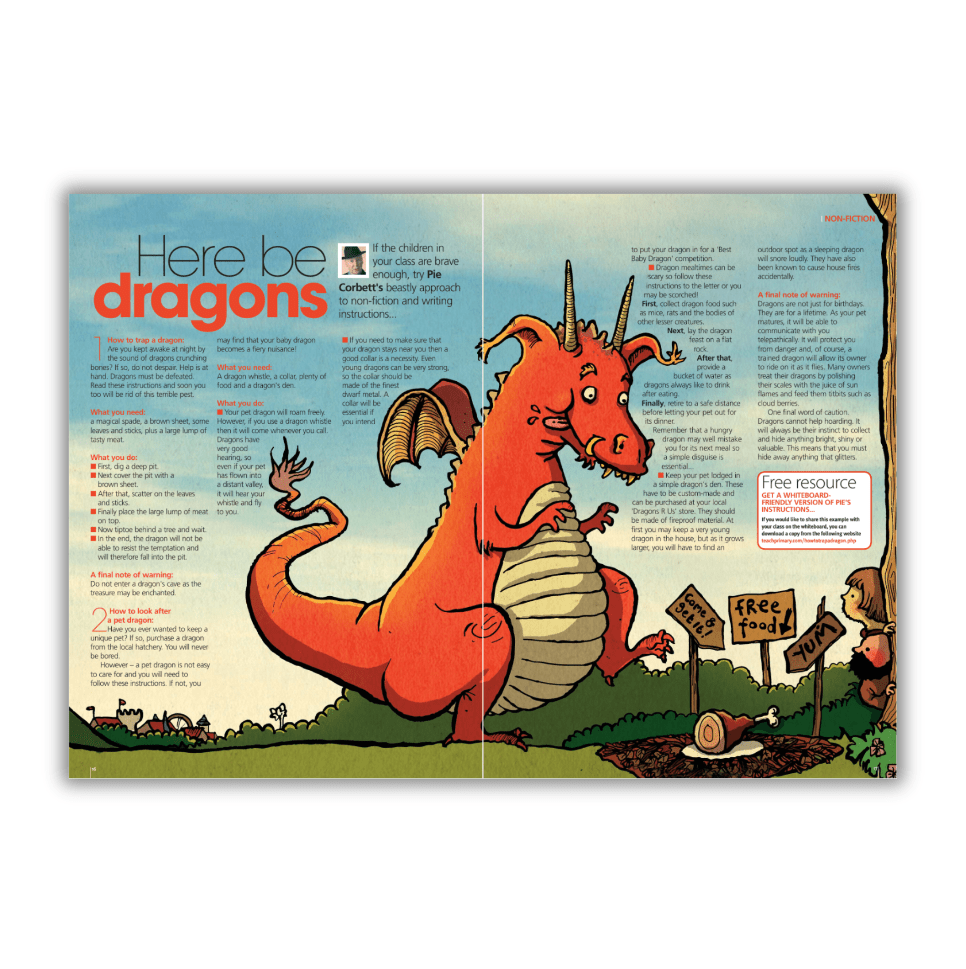
Instructional writing has always been a great exercise for English lessons. It’s all about teaching children how to write specific, unambiguous, step-by-step descriptions of exactly what the reader should do. Here’s our pick of the best resources for KS1 and KS2…
KS2 instructional writing resources
Trap a dragon with Pie Corbett
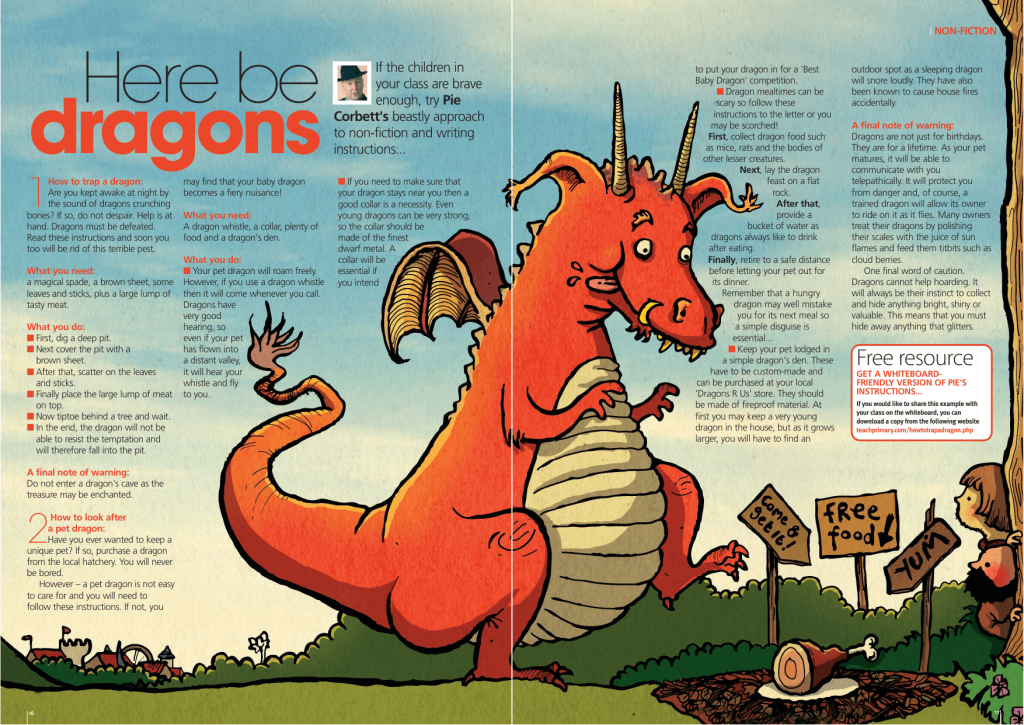
Try this writing instruction KS2 resource from Pie Corbett to show your class how to write instructions for getting rid of a pesky dragon…
Instructional writing templates

Develop KS2 pupils’ understanding of the features of instructional writing and how they are structured with the help of this writing template from Plazoom. You get an instructions poster, planning sheets and teacher notes.
How to steal Christmas instruction writing unit
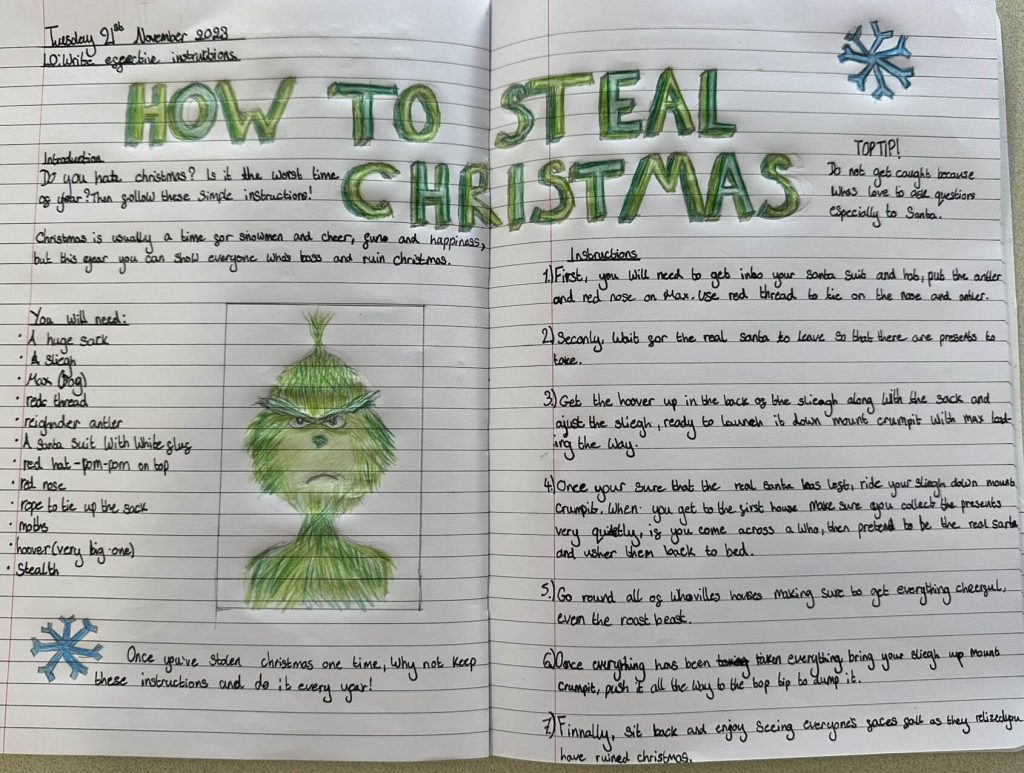
This fun, festive writing project culminates in an exciting final task where pupils use everything they’ve learnt to create a double-page spread titled “How to Steal Christmas,” inspired by the Grinch.
Teach instructional writing with The BFG
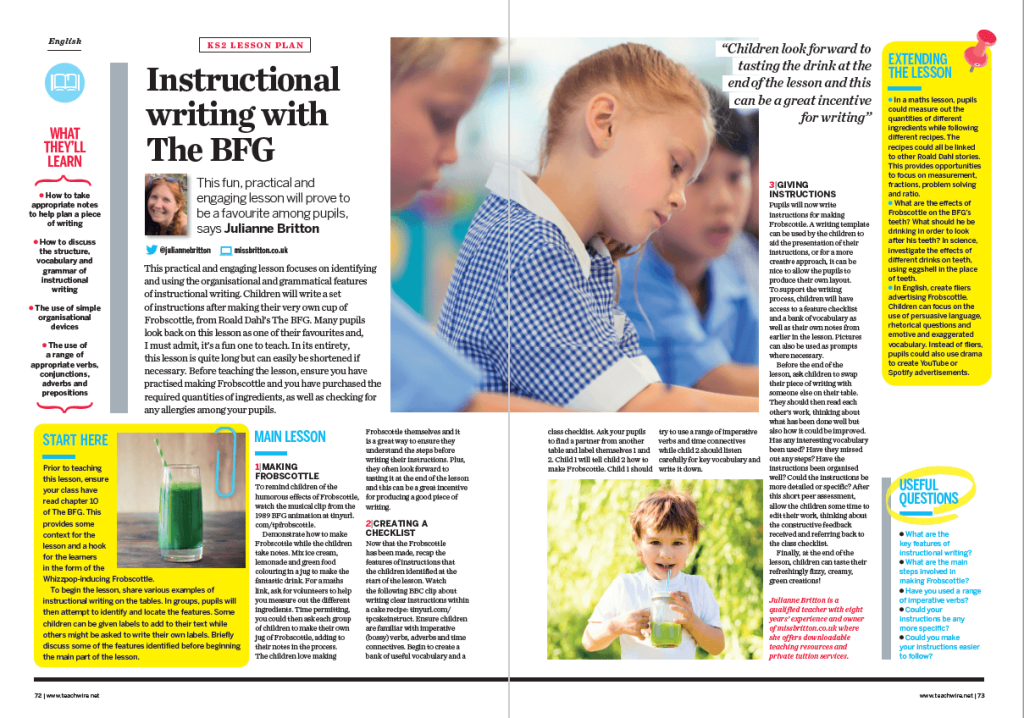
This fun, practical and engaging Roald Dahl lesson from Julianne Britton will prove to be a favourite among pupils. It focuses on identifying and using the organisational and grammatical features of instructional writing.
Children will write a set of instructions after making their very own cup of Frobscottle, from Roald Dahl’s beloved book.
Cross-curricular paper plane project
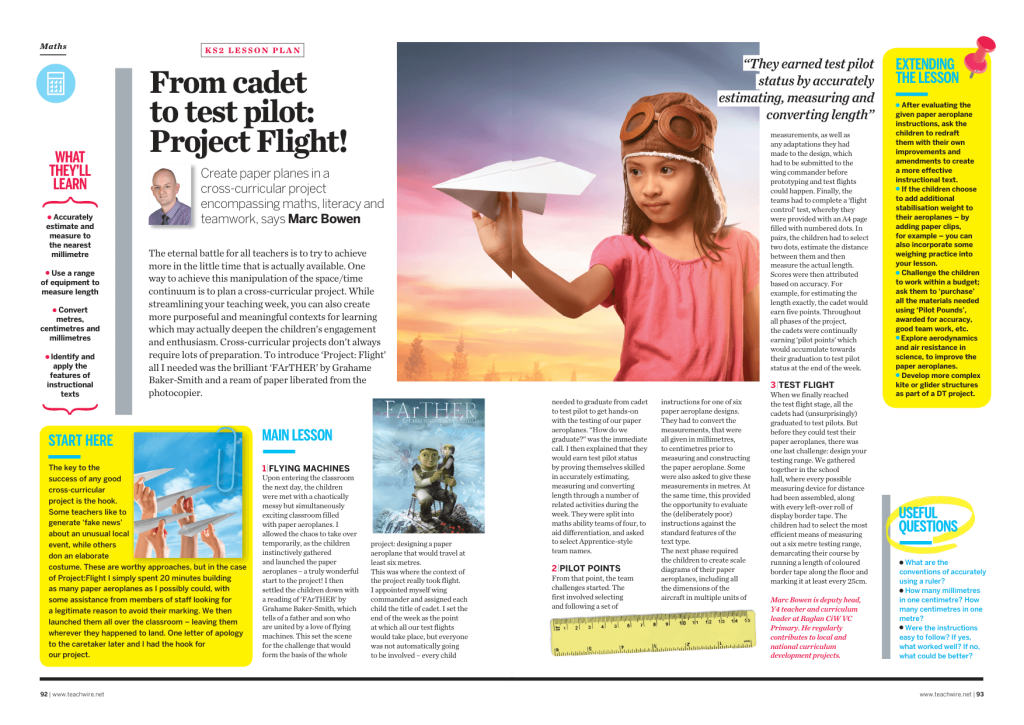
Give children deliberately poor instructions for making paper aeroplanes then ask them to redraft them with their own improvements and amendments to create a more effective instructional text. Get all the details in this cross-curricular paper planes lesson plan.
Viking treasure instructional writing task

Use this news story from The Week Junior about the theft of Viking treasure as the starting point for an instructional writing activity.
The task is to write instructions for what someone should do if their metal detector finds something of potential value.
Instructions picture book
In this article about how to use text types to support children’s writing, James Clements suggests using Neil Gaiman and Charles Vess’s picture book Instructions to teach instructional writing.
The lyrical language of the book guides a novice traveller through enchanted woods to find the way home again.
Set pupils the task of writing their own version. As James says, this creative task sure beats writing instructions for how to make a cup of tea.
KS1 instructional writing resources
Y2 Rules of the Game instructional writing pack
This Year 2 writing assessment resource pack from Plazoom provides the opportunity for KS1 pupils to produce cross-curricular writing that can be assessed against the Year 2 Teacher Assessment Framework (TAF).
Pupils will write the rules of a game or activity from a recent PE lesson, after revisiting their understanding of how to write instructions. A pupil writing checklist is provided to encourage independent proofreading and editing.
BBC video

This short film is from the BBC series, The Facts About Non-Fiction. In it, Stefan Gates demonstrates the process of instructional writing using a cake recipe.
He talks through the key features of instructional writing. This includes using the correct technical terms, simple precise language and imperative or bossy verbs.
Y1 magical spells instructional writing pack
Inspire Year 1 pupils to write simple sentences to create magical spells. This Year 1 instructional writing pack from Plazoom could be used as a Halloween activity or at any point in the academic year to develop Y1 pupils’ sentence writing skills.
Trending
There is also a similar resource pack for Year 2 pupils on writing a wishing potion.
Pupils will read a model text, ‘Strength Spell’, orally reciting it using actions to develop their performance and exploring its use of rhyme. They will then go on to write their own simple spells, orally rehearsing sentences before writing.
More instruction writing resources
Instructional writing model texts
Literacy Wagoll is always a great place to find fully editable model texts, and instructional writing is no exception. You’ll find everything from how to tame a unicorn to how to make an immortality potion.
The above football video, also featured on Literacy Wagoll, features lots of lovely, detailed instructional language.
The Exact Instructions challenge
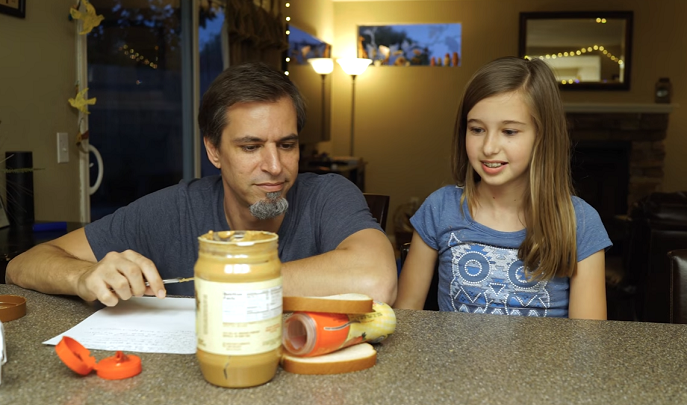
With instructional writing you can at least rely on some human element of interpretation. For example, we expect the reader to know what a hammer and a nail is when following flat-pack instructions for building their new Ikea bookcase.
But when programming you can’t say ‘move forward a bit’, or ‘go over there’. You need to be way more precise about what a ‘bit’ is and where specifically ‘there’ is.
That’s where the ‘exact instructions challenge’ comes in. Watch and enjoy these excellent videos with your class, then you can adapt the activities into something for your class to ‘program’ their partner and ‘debug’ their instructions where necessary.
How to make a peanut better and jelly sandwich
Josh Darnit (real name, apparently) and his adorable kids kicked off this challenge with this sandwich-making video. Josh showcases the perfect attitude towards this activity. He blends the computational thinking style of carrying out the instructions with a very human warmth and humour. Plus, the kids are ace.
Best bit: At 4.10 when the poor boy (Evan) nearly has a meltdown at his dad’s shenanigans.
If the idea of 500 pieces of bread covered in peanut butter and jelly in your classroom is giving you a nervous breakdown, this lovable family followed this up with a drawing instructions challenge which might be easier to replicate in school.
How to make a bowl of cereal
Next up, the Bee family attempt to make a bowl of cereal, with wonderful descriptions like ‘the scoopy side of the spoon’ (which we believe was a discarded Pink Floyd album title) and a wonderfully deadpan poker face from Dad throughout.
Best bit: 3.47 ‘He was so close’.
How to make an ice cream sundae
This one is a great example of how ambiguous pronouns can be misinterpreted. Less of a problem in everyday speech, but it highlights how often we can use them and presume the other person will know what the ‘it’ is that we’re referring to.
Also, is it bad that I still want to eat the finished efforts?
Best bit: The swirls at 3.25.




